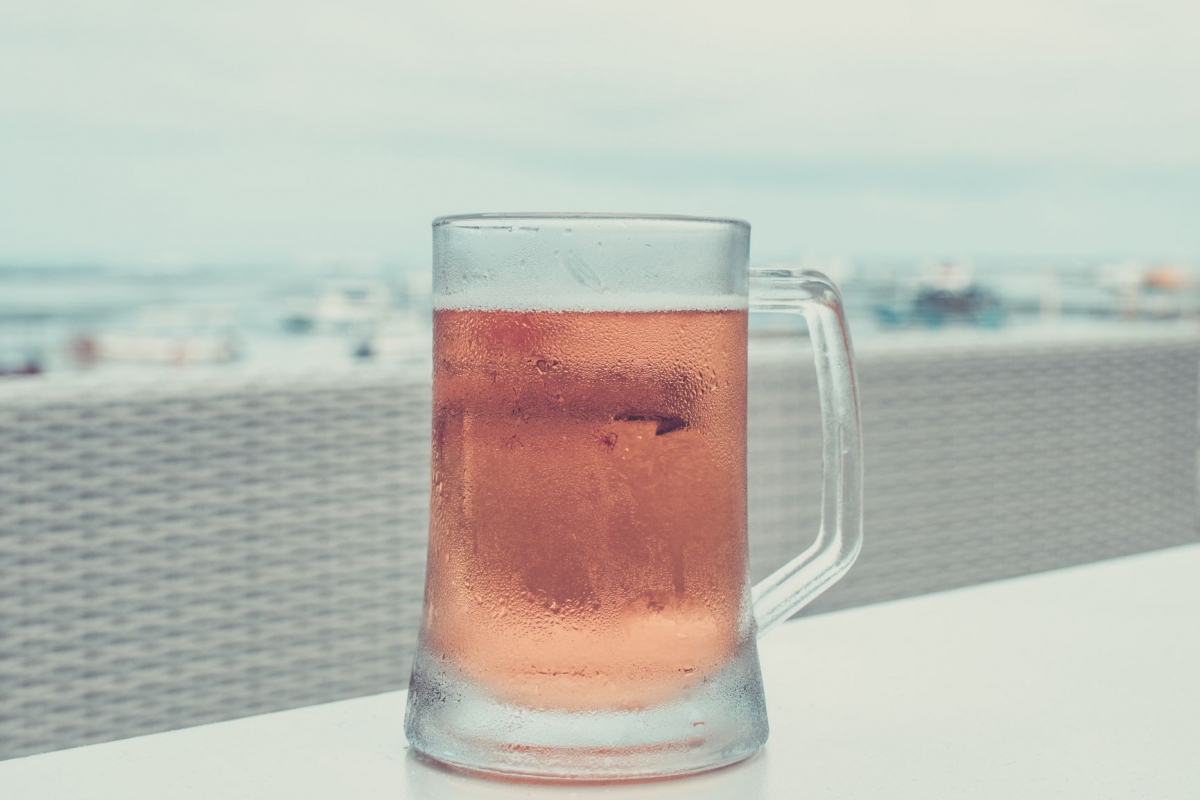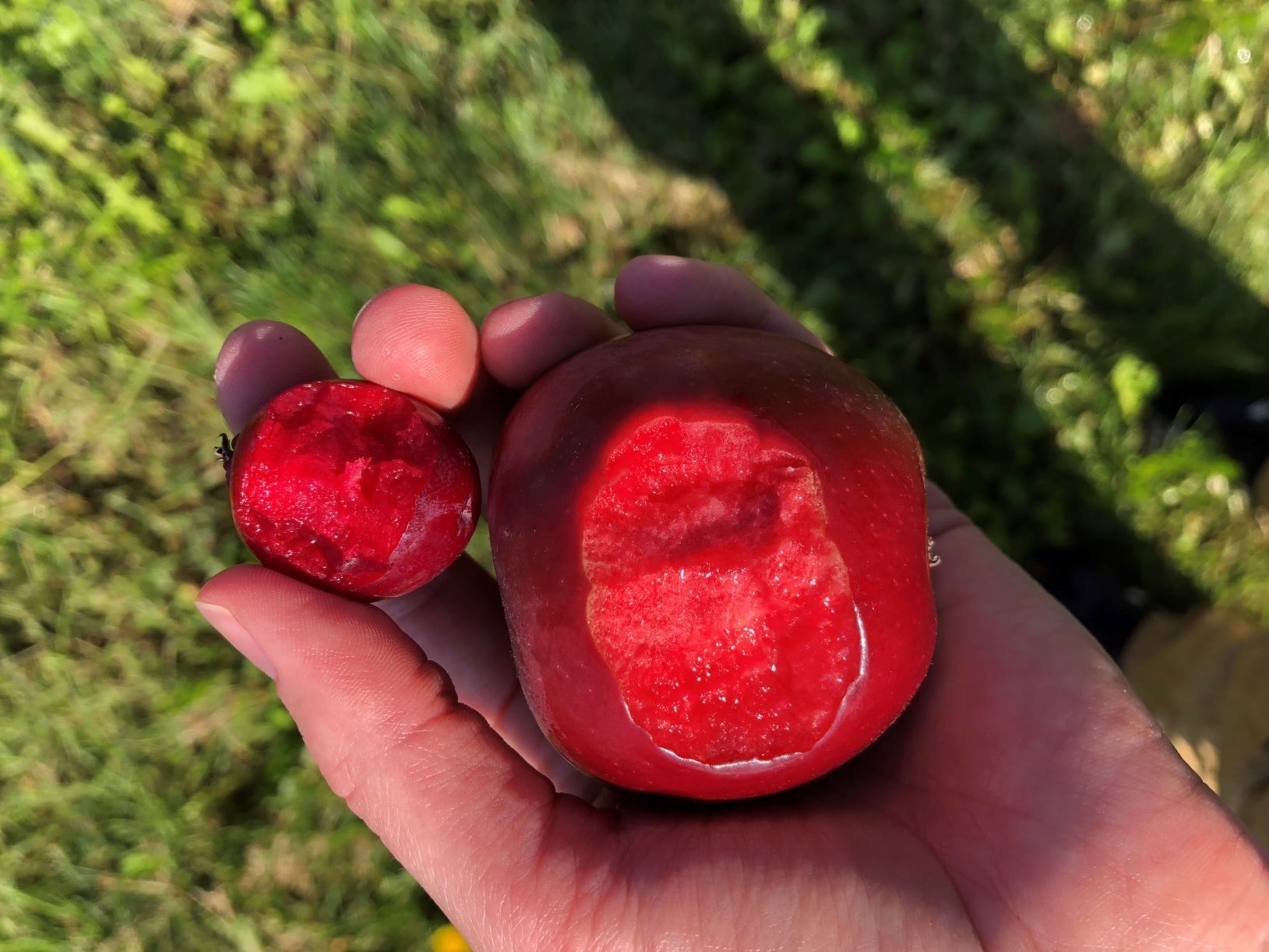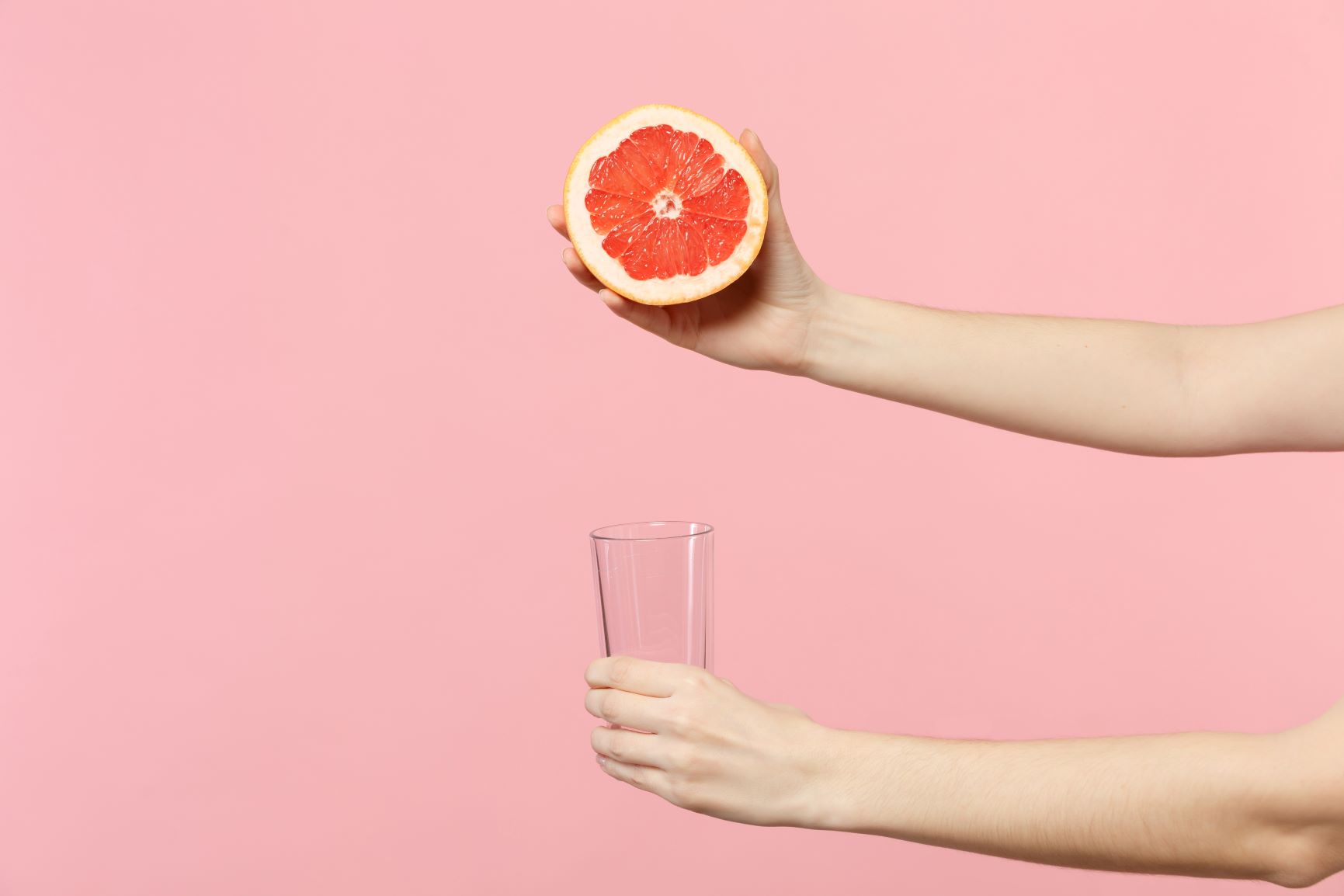VARIATIONS ON ROSÉ: INGREDIENTS FOR CREATIVELY-COLORED CIDER
. . . which components made the cut?

Rosé cider sales have had their ups and downs in recent years. But will these wine-inspired ciders go away entirely? Probably not.
Pink-hued drinks aren't just for spring or Valentine's Day. Many cideries are crafting a product lineup that spans the color wheel—rose tones included—which then lends itself well to rainbow flights and visually-pleasing variety packs. Rosé = year-round. And cidermakers are taking creative liberties in interpreting the elusive rosé through unique ingredient pairings.
So here's the 101 on achieving that signature rosy look:
RED-FLESHED APPLE
PROS: Sure to win the hearts of hardcore cider fans who prioritize the "character" of the apple
CONS: Expensive, difficult to source. Best to price at a premium for seasonal taproom releases
I took time off a few years ago to help harvest red-fleshed Otterson apples from Michigan State University's Clarksville Research Station. These apples would go to local cideries for testing in rosé cider applications. A few years later, that research project is still going strong; I even noticed a recent article about the project in the newspaper.

While the Otterson is an increasingly popular variety, the red-fleshed cider apple list is long: Redfield, Aerlie, Pink Pearl, Mountain Rose . . . it all depends on the growing region.
If your local university has a research extension orchard, start there. They might need cidery partners to test up-and-coming reds. Or try contacting your regional department of agriculture to inquire about research/proposal options for red-fleshed apple funding. If you're in it for the long haul, it might be worth the wait for a few years to establish those trees!
ADDED FRUIT
PROS: Easy and inexpensive way to add color, aroma, and familiar flavor
CONS: If used in large amounts, can become too sweet and overpower the apple
Consumers are quick to associate color with flavor. When they see your reddish beverage, they might expect raspberry, strawberry, grapefruit, cranberry, watermelon or even rhubarb. So why not give your fans the fruits they crave? All combinations are fair game. Strawberry-Grapefruit? Check. Cherry-Rhubarb? You're onto something.

The key is in the quantity. To keep the color delicate, start with high-quality ingredients in low dosage rates (ahem: like Old Orchard's craft concentrates).
If you're into cider-wine hybrids, some cideries (like Shacksbury) have also found success in aging their cider over red grape skins for a touch of color and tannins. Rosé ciders are already a great way to bridge the gap between the wine and cider worlds.
BOTANICAL
PROS: Unique way to add complexity, while snagging attention on store shelves
CONS: Expensive and might not contribute anything to flavor or aroma
Arguably the most popular component of a rosé cider: just a pinch of flowers, herbs, spices, or similar stand-out ingredients. Since the botanical flair adds intrigue but not necessarily flavor, try combining with fruit for maximum sensory impact:
-
Hibiscus + Strawberry/Rhubarb (Pux Cider)
-
Pink Peppercorn + Grapefruit (Bauman's Cider)
-
Chokeberry + Cherry (St. Vrain Cidery)
-
Rose Petal + Pear (Crispin Cider Co)
CONCLUSION
For a rosé cider to stand the test of time, maybe the question is not "either/or" for ingredients but "both/and". Which begs the question: what will your head cidermaker be blending up next?
Syrah "Sy" Linsley is the manager of Old Orchard's bulk supply program, which primarily serves the craft beverage industry with craft juice concentrates. Her passion for fruit-forward beverage evolved from the three years she spent as a fruitarian (only eating fruit) as well as the few years she worked in product development and fermentation. The highlight of Sy's day is to connect with craft beverage makers, so don't be shy: schedule a "Taproom Chat" or hear back from her through our contact form.

Want Brew Blog posts and bulk program updates emailed to your inbox monthly?
Just create an account with us and you'll be subscribed to our "Best of the Zest" Newsletter.































